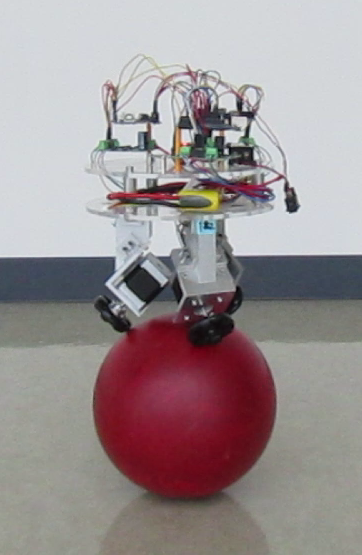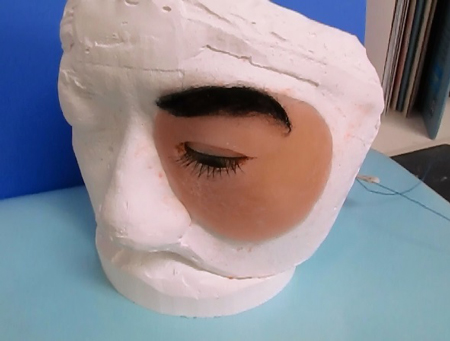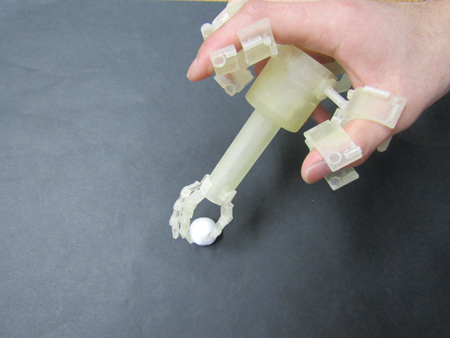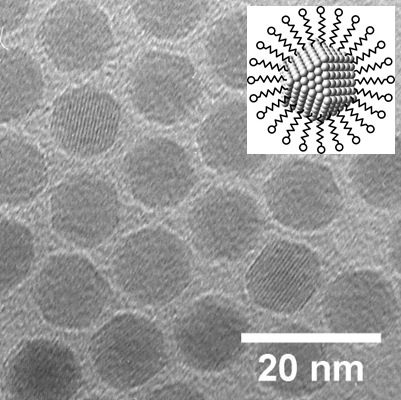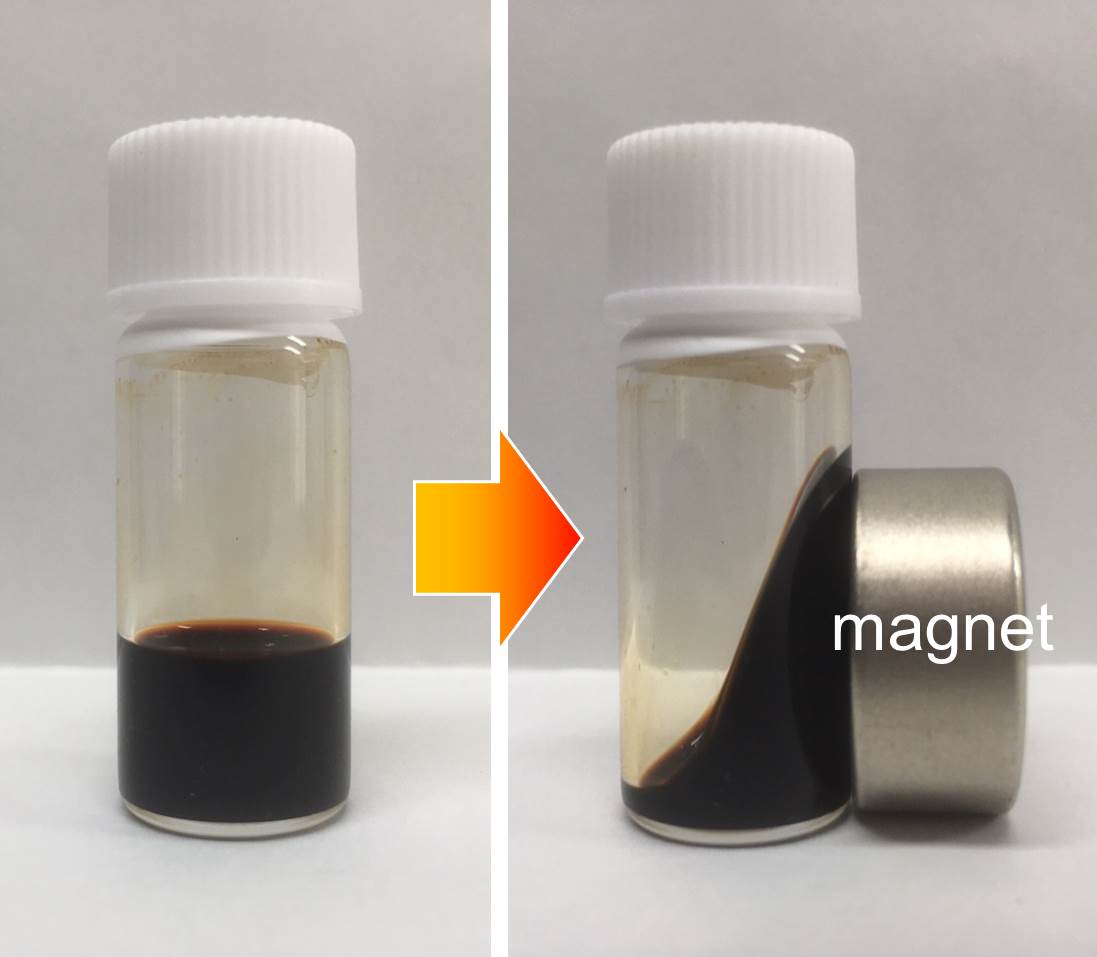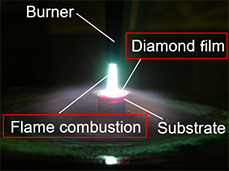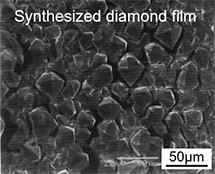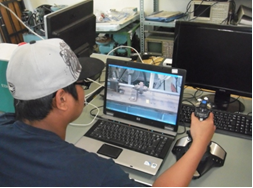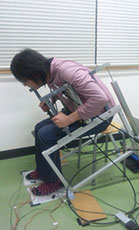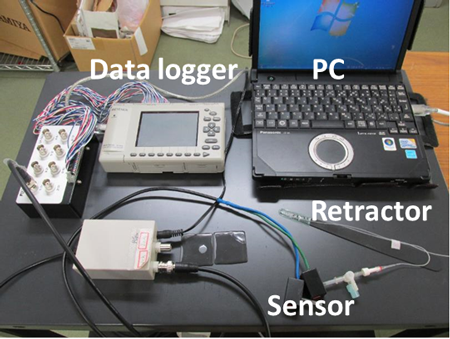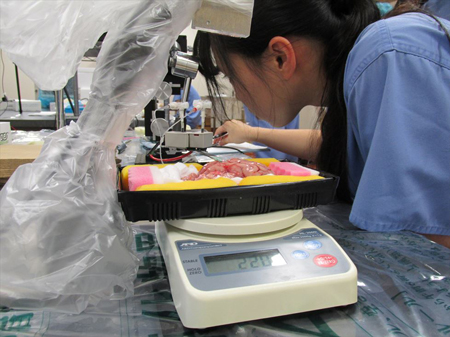Medical System Engineering
Mechanical systems control laboratory
Staffs
- Akihiro NAGANAWA (Professor, Dr. Eng.)
- Midori Hoshizaki (Technical Staff)
Research interests
Our scientific researches are focused on mechanical systems such as robotic and medical devices. In the robotic field, we study how to control a robot, which can balance on a ball. Our scientific interests are focused as well as on an ultrasonic motor which manufactures by using a piezoelectric element and a metallic plate. In medical engineering field, based on the needs of doctors, we develop a blinking epithese, having an application in Dentistry and Oral Surgery field and multi-finger hands which can serve the surgical procedures (Neurosurgery filed). We are also focused into design of such devices that can be used for endoscope procedures (Gastroenterology field).
Fig. 1 shows the state of the robot that balances on the ball. The final goal is to develop a robot, which can realize the 'Kanto of Akita City festival' (Kanto is a pole with lanterns looking like rice ears.) on the ball.
Fig. 2 illustrates an epithese, which is manufactured by the usage of electromagnetic actuator and silicon. The epithese can synchronously realize a blink like the healthy eye.
Fig. 3 shows a manipulator with three fingers, which is being developed in order to bend the fingers. Their purpose is to be used as medical instruments, when neurosurgery procedures are performed.
| Research themes |
|---|
|
Functional nanomaterials engineering
Staff
- Yoshiyuki YAMAMOTO (Associate Professor, Dr. Sci.)
Research interests
It is well known that the physical properties of materials are modified due to size and surface effects when their size is reduced to the nanoscale. In particular, the ratio of atoms appearing on the surface to the number of atoms constituting the nanoparticles is very large. Consequently, the physical properties of these nanoparticles are expected to be quite different from the bulk counterparts. Furthermore, magnetic nanoparticles (magnetic fluid) are recently expected to be applied to medical and biological fields such as magnetic fluid hyperthermia, drug delivery system (DDS), MRI contrast agent, magnetic separation, etc. We study these nanomaterials by performing from synthesis to evaluation, aiming to contribute to the society by exploring the novel fundamental physics and application of them.
Figure 1 shows the TEM image of the synthesized iron oxide nanoparticles with a uniform particle size of about 10 nm. As shown in the inset, the surface of the nanoparticles is modified with a surfactant.
Figure 2 shows a photograph of iron oxide nanoparticles dispersed in a solvent. In the absence of a magnetic field, the magnetic moments of the particles are randomly oriented in the superparamagnetic state, but when the magnet is brought closer, they are oriented to the magnetic field and attracted.
| Research themes |
|---|
|
Surface processing engineering
Staff
- Mamoru TAKAHASHI (Associate Professor, Dr. Eng.)
Research interests
Diamond has excellent properties, namely, high hardness and high wear resistance. A flame combustion method enables the synthesis of diamond using acetylene-oxygen gas flame combustion in ambient air. If diamond films can be directly synthesized on the material surface and good adhesion can be achieved, surface improvement in terms of the high hardness and ultimately in terms of wear resistance can be realized. We have synthesized diamond films on materials surface of cutting tool, artificial hip joint and dental implant by the flame combustion method.
Figure 1 shows the synthesis of diamond films by acetylene-oxygen gas flame combustion.
Figure 2 shows the SEM image of synthesized diamond films by the flame combustion method. The diamond crystallites was synthesized by the flame combustion.
| Research themes |
|---|
|
Fluid power engineering
Staff
- Yoshihiro SASAKI (Associate Professor, Dr. Eng.)
Research interests
Hydraulic Control
Hydraulic systems have been widely used in industries due to the advantages of small size-to-power ratios and large force/torques output. Therefore, it is applied to restoration work at the disaster site and work in extreme situations such as space and underwater. In such a bad condition that human beings do not enter, working by remote control is effective. We propose to present the image transmission technology by the virtual space using the IP network and the generated force of the cylinder at the remote place as reaction force via the joystick to the operator.
Pneumatic Control
For elderly people whose muscle strength has declined, standing up and sitting motion in daily life are often burdens, and caregiver help may be necessary. In this study, we are developing a machine that realizes human-friendly stand-up support by applying the compressibility of air as a substitute for caregivers.
Figure 1 shows the operator remotely controls the hydraulic cylinder with a joystick while monitoring transmitted images from a distant place using the IP network.
Figure 2 shows a device that supports stable standing motion while changing the position and generated force of the pneumatic cylinder in real time using various sensors.
| Research themes |
|---|
|
Measurement/control system for medical engineering
Staff
- Takeshi SEKI (Lecturer, Dr. Eng.)
Research interests
We developed measurement and control system for medical and industrial fields.
| Research themes |
|---|
|


